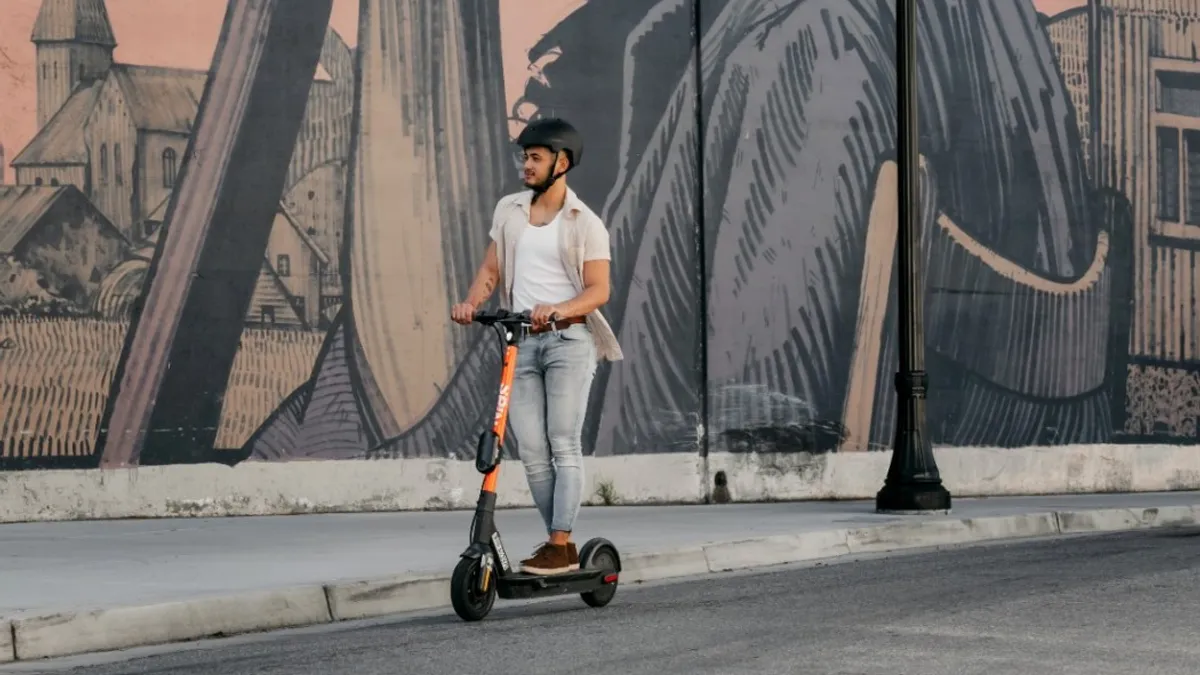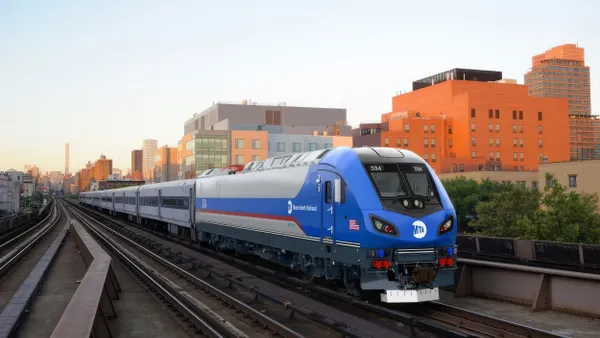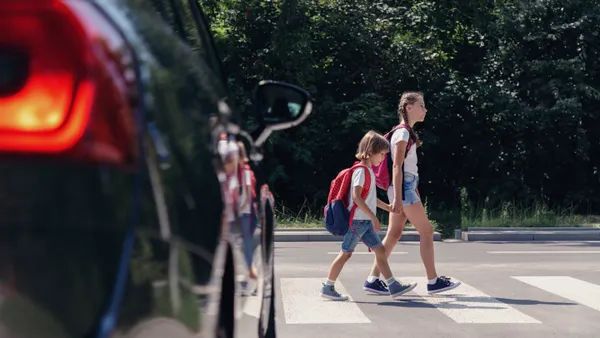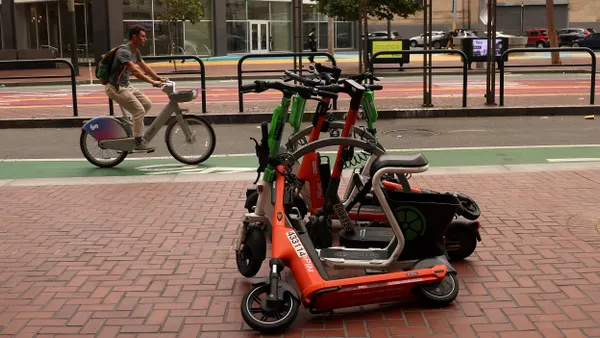This year was supposed to be a turning point for scooter operators' profitability after years of pilots, valuations and VC funding injections. But that focus has come to a crashing halt due to the new coronavirus (COVID-19) pandemic that has resulted in industry layoffs, new ridership demands and a mass exodus of scooter fleets from certain cities.
Spin, purchased by Ford Smart Mobility in 2018 for $100 million, is one such company that has been forced to adapt to the industry's rapidly changing conditions. The company remains in 10 U.S. cities amid the pandemic and has shifted much of its attention to helping riders complete essential trips.
Smart Cities Dive reconnected with Spin President and Co-Founder Euwyn Poon to learn how the company is adapting to unprecedented changes, and what he envisions for the future of the industry.
This interview has been edited for brevity and clarity.
SMART CITIES DIVE: When we last spoke in February, you said the scooter industry's next phase will be to scale up and become profitable. In what ways has the pandemic upended those plans?
EUWYN POON: It certainly put a damper on ridership. At the same time, it’s given us a real chance at focusing on ... reinforcing our public-private partnerships with cities and pushing forward to make micromobility a real long-term solution.
During this time, we’re focusing on longer-term investments including hardware innovations so that we can scale once cities and markets start opening up again ... We’re also investing and innovating across infrastructure. We launched a "Build a Better Barrier" [challenge], which calls for people to submit ideas to reimagine how street barriers are being constructed.
We believe another big step toward the micromobility industry being a healthy one, is better infrastructure to support more ridership. That’s been classically an area of challenge, but this unique time has given us a unique opportunity to push forward in that regard. We've all seen really interesting shots of cities now devoid of cars and now have the chance to reimagine what that would look like.
SMART CITIES DIVE: How did you decide which markets to stay in during the pandemic?
POON: We've looked for the impact that we would have in those markets by continuing to operate. With ridership down as mentioned earlier, we’ve turned our focus toward servicing essential trips. In this time of need, we were thinking mostly about how we support our communities.
Detroit and San Francisco were quite engaged in working with us to ensure that our scooters could be deployed and used by personnel that were still needing to make essential trips. We also have shaped our service to specific areas that were going to be in high usage during this time.
Essentially, our focus has been on: How do we help our communities? How do we work with cities during this time and help and really provide a basic need? Mobility is a basic necessity for people and and for some, being in-place is still not an option.
SMART CITIES DIVE: What new ridership behaviors have you observed?
POON: We're seeing an increase in trips to pharmacies and hospitals, we're also interestingly noting a trend toward longer trips and further distances traveled. We're hypothesizing this means folks are using scooters for essential trips across longer distances rather than just short rides across the city.
SMART CITIES DIVE: What were some of those challenges pre-pandemic that held cities back from creating better micromobility infrastructure?
POON: North American cities were built mainly around cars ... Once we start being in a better state of control, then we can start thinking about some of the potential positives that might come out of this time of reflection and pause. One of the biggest things is obviously going to be micromobility lanes and how do we accommodate other forms of transportation other than cars.
We're seeing a strong trend toward micromobility in China, one of the markets opening up first post COVID-19, and people are shying away from public transportation and shared cars .... It should be really interesting to see what effect that has in North America and the U.S. as we start scaling up again.
SMART CITIES DIVE: Are you looking to Chinese cities to inform policies?
POON: We’ll be keeping an eye on those. DiDi, the mobility company in China, just recently announced a $1 billion investment into its bike unit so it might be an interesting resurgence of the micromobility industry. And we know the micromobility industry really kicked off there in 2015 and 2016 with shared bicycles and then spread around the world. It’s almost as if it’s come full circle a bit ... it will be interesting to watch what happens there and what we can learn from them as they scale up.
"A certain combination of owned and shared vehicles on streets pushes general ridership, which lends itself to the flywheel effect of pushing for more infrastructure to support more riders and in turn, will push for more micromobility vehicles in general."

SMART CITIES DIVE: As cities reopen and adapt to new transportation patterns, what do you envision as the role of micromobility?
POON: Beyond just the shared ridership model, clearly people have owned micromobility devices for a long period of time, namely bicycles. We might see some of that pick-up as people start relying more on micromobility, [which] in general is good for the industry. A certain combination of owned and shared vehicles on streets pushes general ridership, which lends itself to the flywheel effect of pushing for more infrastructure to support more riders and in turn, will push for more micromobility vehicles in general.
SMART CITIES DIVE: Are we in the midst of a 'scooter apocalypse'? What do you see for the future of the industry?
POON: In times of crisis like this, we've seen the value of micromobility. There are certain dynamics in the industry that might play out with companies that have pursued a more aggressive strategy. At the same time, I think the demand for the product is being shown, whether it’s shared or owned, whether it's scooters or other forms of micromobility, I think we’re going to continue to see a rise in general in this industry.
We strongly believe in our approach, which is taking a long-term view and incorporating our work with cities into our growth. Overall, I’m still really confident about the future of this industry ... we’ll see a real resurgence in folks rediscovering or discovering micromobility.
To keep up with all of our coverage on how the new coronavirus is impacting U.S. cities, visit our daily tracker.











